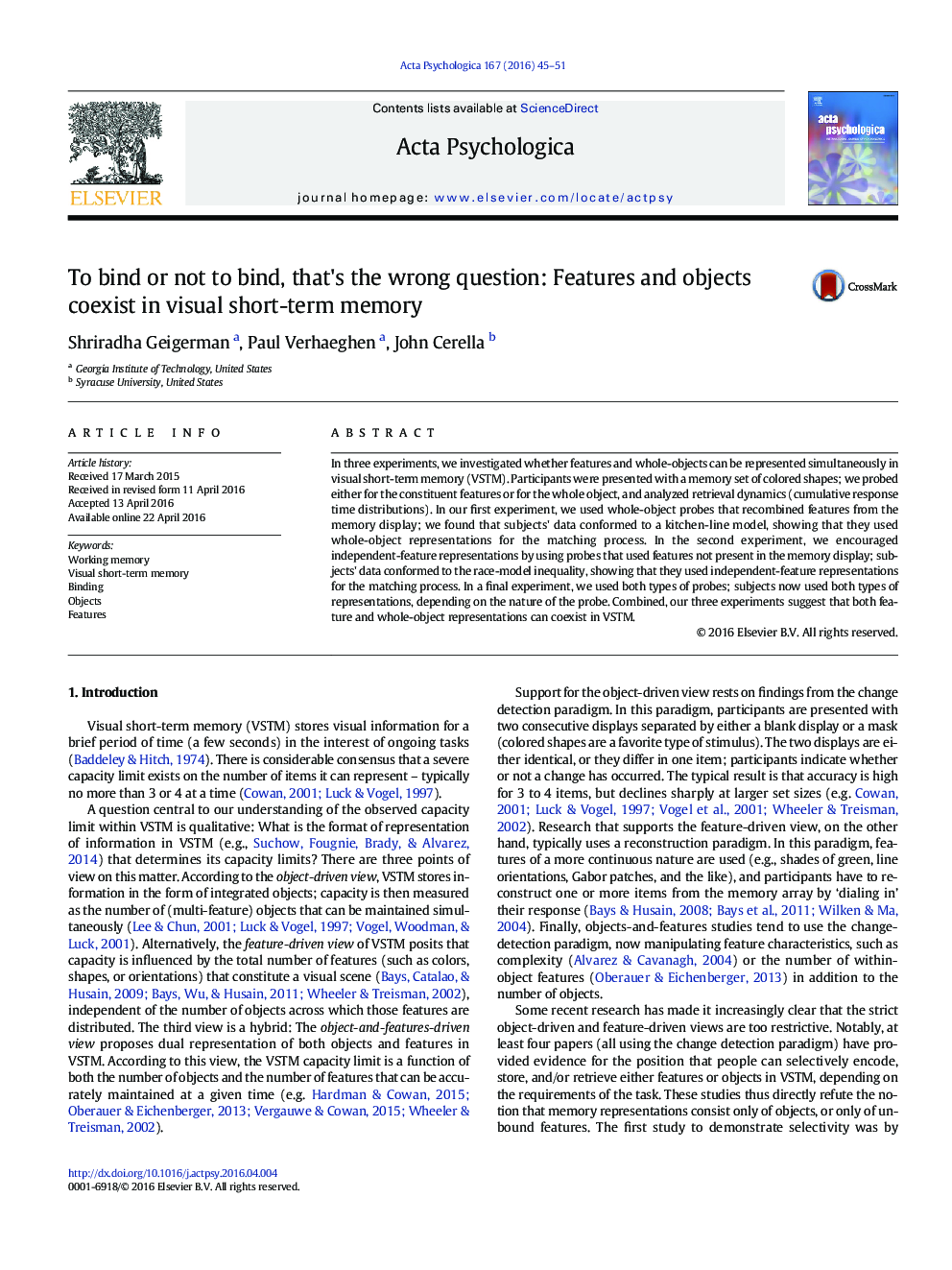| Article ID | Journal | Published Year | Pages | File Type |
|---|---|---|---|---|
| 919637 | Acta Psychologica | 2016 | 7 Pages |
•We examined whether visual information can be stored both as objects and features in visual short-term memory (VSTM).•We tested participants' memory of objects in terms of constituent features or whole-objects.•Analysis of cumulative reaction time distributions from each experiment showed that objects and features can co-exist in VSTM.
In three experiments, we investigated whether features and whole-objects can be represented simultaneously in visual short-term memory (VSTM). Participants were presented with a memory set of colored shapes; we probed either for the constituent features or for the whole object, and analyzed retrieval dynamics (cumulative response time distributions). In our first experiment, we used whole-object probes that recombined features from the memory display; we found that subjects' data conformed to a kitchen-line model, showing that they used whole-object representations for the matching process. In the second experiment, we encouraged independent-feature representations by using probes that used features not present in the memory display; subjects' data conformed to the race-model inequality, showing that they used independent-feature representations for the matching process. In a final experiment, we used both types of probes; subjects now used both types of representations, depending on the nature of the probe. Combined, our three experiments suggest that both feature and whole-object representations can coexist in VSTM.
